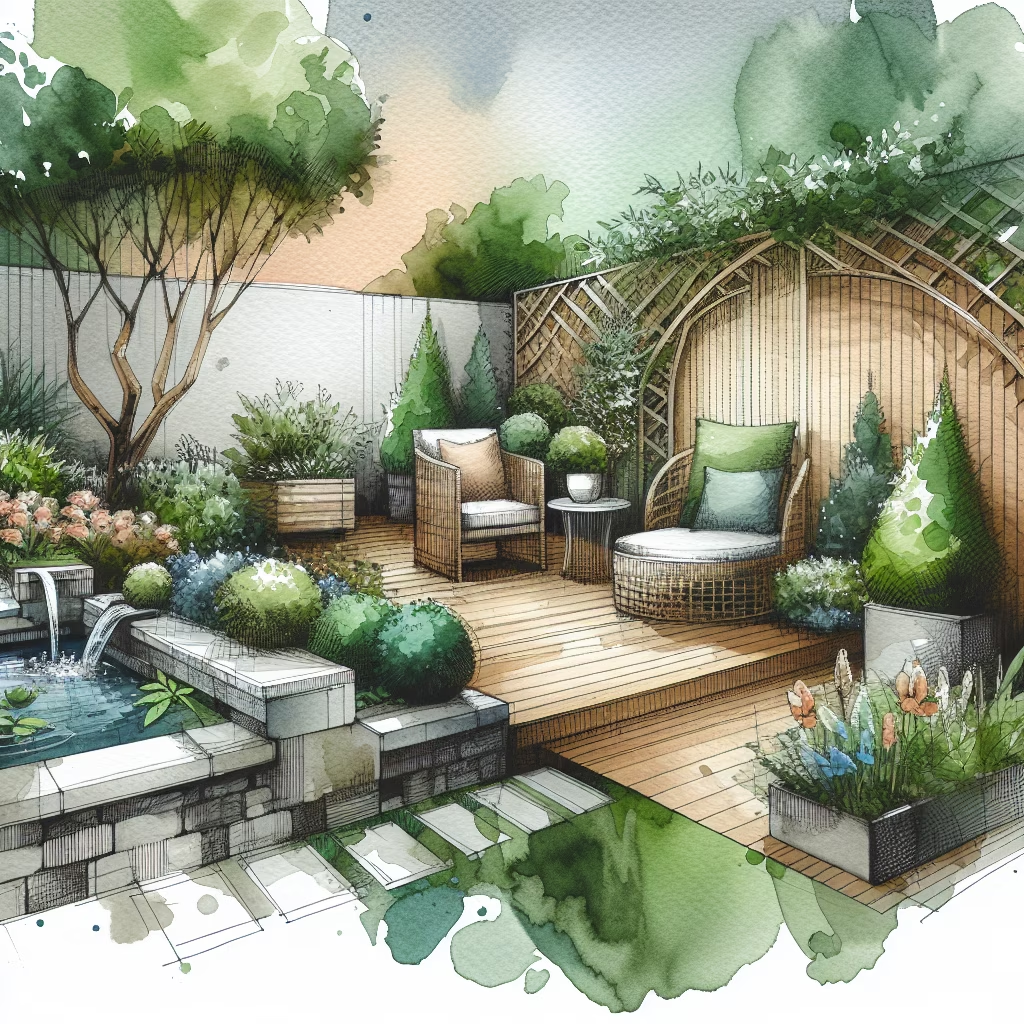
Designing a small backyard garden for urban spaces involves strategic planning, selecting appropriate plants, and utilizing sustainable gardening practices. This guide will walk you through the process, from conceptualizing your garden layout to maintaining it in an eco-friendly manner. We'll cover essential topics such as plant selection, garden design, water management, and energy use reduction to help you create a beautiful and sustainable garden in a limited space.
Row cropping involves placing plants in single file rows with at least 18 inches of space between them. This method is ideal for larger gardens as it allows for easy access and the use of mechanical equipment like tillers. However, it does reduce the number of plants you can grow due to the space allocated for footpaths.
Intensive cropping is better suited for small gardens as it maximizes the use of available space. Plants are placed closer together, which helps to reduce weed growth and retain soil moisture. This method requires more manual labor but is highly efficient in small urban spaces.
Choosing plants that are adapted to your local climate and soil conditions is crucial for a sustainable garden. Native plants are generally more resilient and require less water and maintenance. Drought-tolerant plants are also a good choice as they can thrive with minimal watering.
Invasive species can quickly take over your garden and spread beyond your property. Be aware of the invasive species in your area and avoid planting them. Instead, opt for diverse, drought-resistant perennials that are less likely to cause problems.
Drip irrigation systems and soaker hoses are more efficient than traditional sprinklers as they reduce water loss due to evaporation. These systems allow for precise watering, ensuring that water reaches the plant roots without runoff.
Setting up rain barrels to collect and store rainwater is an excellent way to manage water resources. Cisterns can also be used for larger storage needs, providing water for plants, washing clothes, and other non-potable uses.
Mulching helps retain soil moisture, reduce weed growth, and improve soil health. Organic mulches like wood chips, straw, and compost are excellent choices for sustainable gardening.
Opt for manual or electric tools instead of gas-powered ones to reduce fossil fuel consumption. Push-reel mowers and electric trimmers are efficient and eco-friendly alternatives.
If you plan to include lighting in your garden, choose solar-powered LED bulbs. They use less energy and provide a natural-looking light, enhancing the beauty of your garden without increasing your carbon footprint.
Regularly apply mulch to retain soil moisture and suppress weeds. Hand-pulling weeds is more effective and eco-friendly than using chemical herbicides.
Keep your plants healthy by regularly pruning and trimming them. This promotes growth and prevents diseases from spreading.
Composting garden waste is an excellent way to recycle nutrients back into your garden. It reduces the need for chemical fertilizers and helps improve soil health.
Creating a small backyard garden in an urban space is not only rewarding but also beneficial for the environment. By implementing sustainable gardening practices, you can create a beautiful, eco-friendly oasis that supports local wildlife and conserves natural resources. Remember, the key to a successful garden is planning, selecting the right plants, and maintaining it with care.
You can also watch this video tutorial for a visual guide:
Learn how to build a DIY rainwater harvesting system for your home garden. This comprehensive ...
A comprehensive guide on how to invest in cryptocurrency safely in 2024, covering essential steps, ...
Learn how to improve your website's SEO with the latest Google updates. This comprehensive guide ...
A comprehensive guide for beginners on how to build a mobile app, covering ideation, development, ...
Learn how to set up an eco-friendly workspace at home in 2024 with practical tips ...
This comprehensive guide provides strategies and tips to improve your graphic design skills using Adobe ...